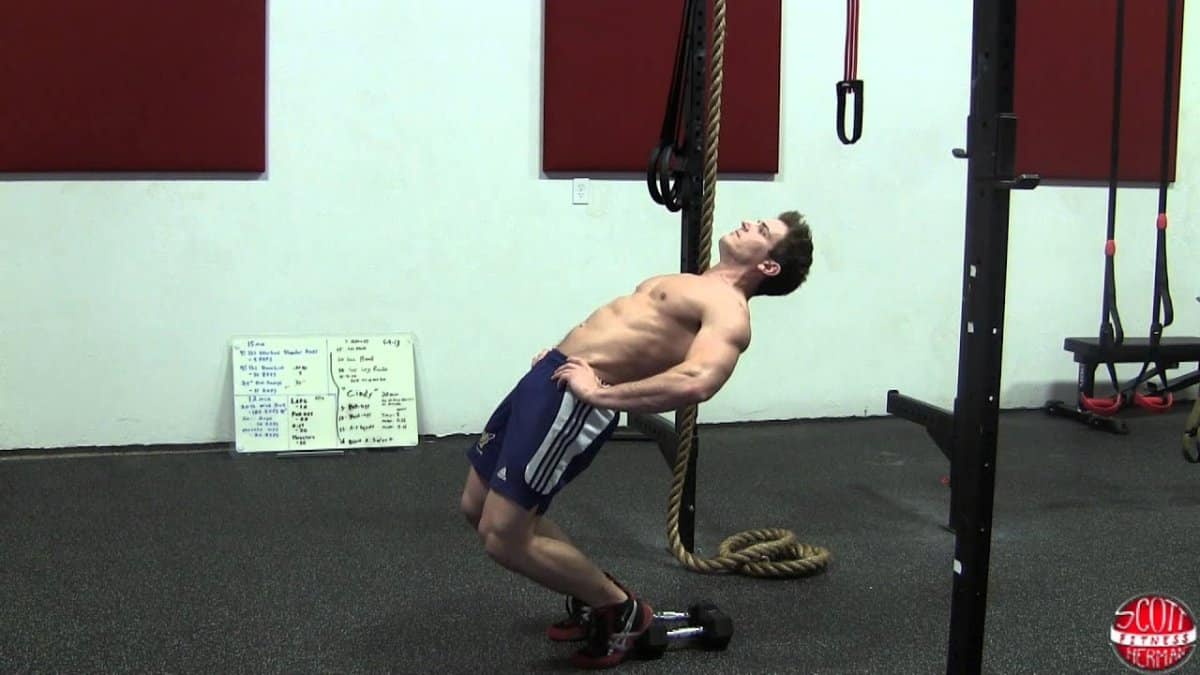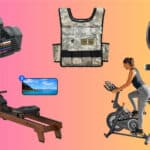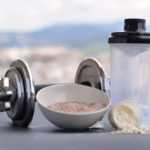The Sissy Squat… You’ve heard whispers in the gym, seen it peppered across fitness forums, and maybe even caught a few daring souls trying it out – but have you given it a chance? Despite its playful name, there’s nothing timid or ‘sissy’ about this power-packed move. It’s the unsung hero of leg day, a hidden gem for those seeking chiseled calves and glutes that make heads turn. If you’re ready to push beyond the ordinary and discover the explosive benefits of this dynamic exercise, read on. It’s time to redefine strength, one squat at a time.
Interested in learning more about the Sissy Squat? Let’s dive deeper:
Jump to:
- Sissy Squat: What is it ?
- How to do sissy squats with Perfect Form
- Sissy Squat: Origins
- Benefits of sissy squats
- Sissy Squat Machine vs. Traditional Sissy Squats
- Sissy Squat Progressions
- Common Sissy Squat Mistakes
- Sissy Squat Variations
- Sissy Squat Alternatives
- Equipment needed (if any)
- Sissy Squats Muscles Worked
- Sissy squat FAQs
Sissy Squat: What is it ?
Squats are such an important exercise for almost everyone, from athletes to elder people. The amount of variety you can add to this one exercise is as far as your imagination allows you to do so.
Front squats, back squats, pistol squats, and box squats are just some of the many forms squatting can have.
Now, take a look at this picture.
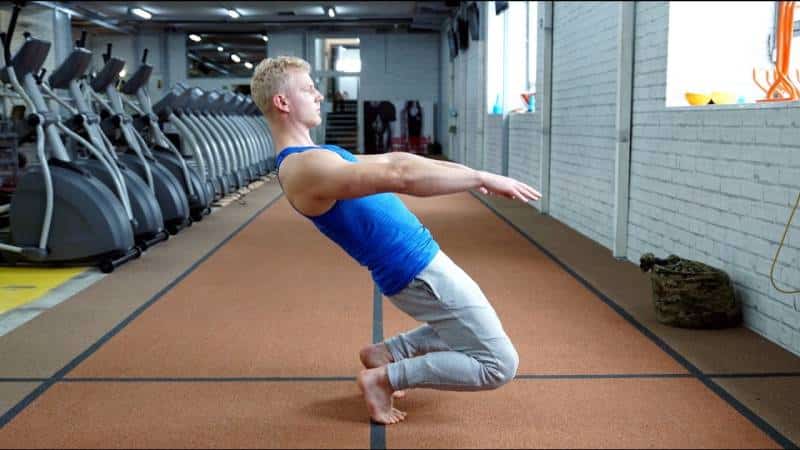
I’m almost sure you felt your knees rip apart while yelling about this guy’s poor technique. Well, I reassure you that this is the Proper form when we’re talking about the Sissy Squat.
How to do sissy squats with Perfect Form
Before diving headfirst into the transformative world of Sissy Squats, it’s pivotal to get the form right. Just like a sculptor needs precision to turn stone into art, your posture and movement are the tools that will carve those dream legs.
Starting position: The Setup
Start in a standing position, with your feet shoulder-width apart. Squeeze your glutes and activate your core to maintain a hollow position (neutral spine). Before attempting a freestanding Sissy Squat, hold on to a pair of rings or the wall.
The descent
Lift your heels off the ground, and while maintaining a straight line from your knees to your head, bring your knees forward and aim to go as close to the ground as possible in a squat movement. Go as low as you feel comfortable going, without compromising technique. While your knees travel forward, bring your body backward, without losing activation in the core and your glutes.
The ascent
While a full Sissy Squat requires you to lift your body back up by staying on your toes, in order to safely progress, you could only train descents and plant your heel on the ground for the ascent until you feel comfortable performing a full Sissy Squat. Finish the movement by touching your heels on the ground and extending your knees and hips.
Sissy Squat: Origins
As the legend says, Arnold Schwarzenegger introduced this the Sissy Squat to us as a quad isolation squat variation. The name Sissy sounds funny, however, it derives from a Greek legend of Mythology, King Sisyphus, who was punished by the Greek Gods for escaping Hades (Hell) twice. His punishment was to roll a cursed boulder up a hill that always rolled back down. This made Sisyphus roll the boulder forever.

If you have ever done sled pushes, which is similar to what Sisyphus was forced to do, you would have felt that enormous quad pump. This is probably why most Greek Mythology art shows him with huge thighs and, especially, quad muscles.

Benefits of sissy squats
What makes the Sissy Squat so special? There is much more than just the quad pump. It can really help taking your fitness journey to the next level. Here are some of the key benefits of the Sissy Squat.
Quad development
From a bodybuilding standpoint, Sissy Squats are a quad isolation exercise. Your whole bodyweight is lifted by using knee extension with locked hips, thus making the quads work excessively more, as your glutes and hamstrings turn into a supporting role. This is why bodybuilders would use the Sissy Squat.
CrossFitters also like Sissy Squat as an accessory movement for quad development and knee strength. Lately, I have been watching athletes from different sports, perform Sissy Squat and variations of it for its benefits.
Bulletproofs your knees
Most people will struggle to perform a Sissy Squat right away or will hurt themselves before claiming the benefits of this exercise. I advise you to start off with the regression exercises mentioned below, and stick to those for a good amount of time before progressing, to make sure you don’t injure yourself.
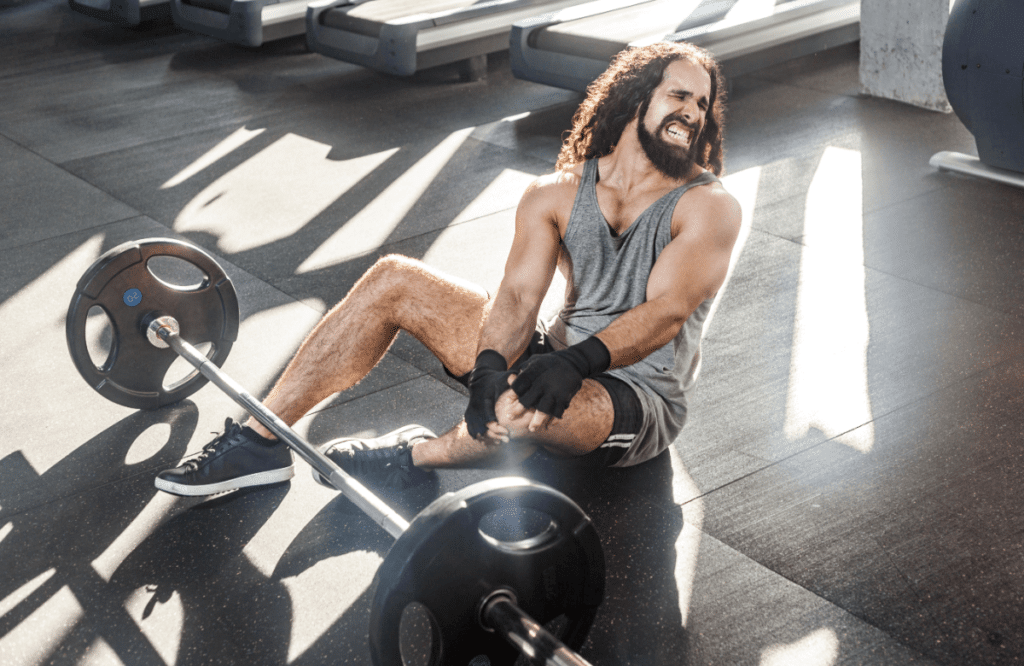
In contrast to the precautions I mentioned above, Sissy Squats are a great exercise to bulletproof your knees, by strengthening the muscle and connective tissue around the knee joint, like the quadriceps, the quadricep tendon, and the patellar tendon. From my coaching experience, this leads to a tremendous drop in knee injuries and an athletic performance boost. I strongly suggest you incorporate some kind of variation or alternative (not necessarily Sissy Squats) into your training routine.
Bulletproofs your ankles
Another reason I am a fan of exercises similar to the Sissy Squat is ankle strength development. As you can see, the ankles are in a fully extended position. This means that the Soleus muscle gets hit at end-range, another muscle that plays a big role in knee stability and also athletic performance.
End-range strength is a very important factor that many people neglect in their training. It basically means that your muscles are functional and strong throughout the whole movement, bulletproofing them and the joints that are supported by those muscles.
Improves balance, proprioception, and core strength
Despite the Sissy Squat primarily involving the quads, it also utilizes many other muscle groups to correctly perform it, while having the body in an unusual position, when compared to regular squats.
The movement starts with leaning the body backward in a straight line position from the knees up until the shoulders, maintaining constant tension through the whole body. This activates the core while squatting on your toes with your knees traveling excessively forward activates the majority of leg muscles, especially the quads and calves. Additionally, due to the unusual position of the body, balance and proprioception are also challenged by the Sissy Squat.
Not an isolation exercise after all
Despite the Sissy Squat being popular for its quad isolation purposes, it is definitely much more than just a leg extension. Its benefits range from:
- tendon/joint strength
- balance and core development
- full body proprioception improvements
- Knee and ankle stability and mobility
Sissy Squat Machine vs. Traditional Sissy Squats
While traditional sissy squats are a fantastic exercise for targeting the quads and glutes, some individuals may find that using a sissy squat machine offers additional benefits that can enhance their workout experience.
Benefits of Using a Sissy Squat Machine:
- Stability and Support:
- The machine provides stability and support, which can be particularly beneficial for those who are new to the exercise or have balance issues. This support helps to maintain proper form and reduces the risk of injury.
- Isolation of Target Muscles:
- The machine allows for greater isolation of the quads and glutes, ensuring that these muscles are fully engaged and worked during the exercise. This can lead to more effective muscle development and strength gains.
- Adjustability for All Fitness Levels:
- Most sissy squat machines are adjustable, allowing you to customize the machine to your height and fitness level. This makes the exercise accessible to everyone, regardless of their experience or strength.
- Safety:
- The machine provides a safer way to perform sissy squats, as it reduces the risk of losing balance and falling backward. This is particularly important for those who may have a history of knee or ankle issues.
Sissy Squat Progressions
The traditional sissy squat is an advanced exercise and should be incorporated slowly into an athlete’s exercise program. It is advised to follow the progression exercises listed below in order to prime the body for the full Sissy Squat.
Treadmill backward walk
This is an exercise I use as a warm-up for every leg dominant workout. It can also be done with a sled, with Reverse Sled Pulls. It promotes blood flow to the legs, warms up the knees properly, and strengthens the anterior part of the leg, which includes the quads and shins, the most important muscles for knee strength and stability.
Walking backwards can also increase overall stability, and help with rehab for people who suffer from balance issues after suffering health problem as this study shows.
Rep Scheme:
10 minutes as a warm-up and 5 minutes for cooldown
Medball Hamstring Curls
This exercise targets the supporting muscles for a Sissy Squat, which include the hamstrings, calves, glutes, and lower back. Try to maintain a slow tempo and your hips fully extended.
Rep Scheme
3×20
Heel-elevated Squats
This Squat variation will teach you a different squat angle, with your heels raised and your knees traveling forward. It will strengthen the muscles and joints in this specific position, which is necessary for the Sissy Squat. A heel-elevated squat will also allow for a full range of motion, due to decreased ankle mobility requirements.
Rep Scheme
Perform 3×20 reps with your bodyweight at first, and progress towards holding a light kettlebell.
Reverse Nordic Curls
Reverse Nordic Curls are a great knee strengthening exercise, which mimics the Sissy Squat but with your knees on the ground. By doing them you will also learn how to embrace your glutes and core for the Sissy Squat. Try to maintain your hips locked and your core engaged as in a Hollow position.
Rep Scheme:
Perform 3×8 with your bodyweight and then progress towards holding a light plate. If you struggle to do this exercise, try doing negatives (only the descent), and progress towards holding a pair of rings or a band.
Nordic Curls
In order to perform the Sissy Squat safely, you have to work on the antagonist muscles of the movement as well. This will tremendously lower your chances for injury and will help you progress smoother and safer towards achieving a Sissy Squat.
The Nordic Hamstring Curls are one of the best exercises for hamstring and knee strength. Try to maintain locked hips while performing them.
Rep Scheme:
Perform 3×12 only doing the descent while pushing yourself back up with your arms. Progress towards removing the push-up.
Assisted Sissy Squat
When you have performed the exercises mentioned above without pain and you feel ready to try out a Sissy Squat, I suggest you do it with some assistance for the first few times to give the body time to adapt. This variation will have you hold on to a barbell but you can hold on to a pair of rings, a chair, or the squat rack itself.
Rep Scheme:
Perform 3×8 of this exercise following ALL of the exercises above to make sure your body is adequately warmed up and ready for it.
Negative Sissy Squat
Now that you have gone through all of the exercises mentioned, you can try performing a Negative Sissy Squat, which includes only the descent. This will remove some of the tension on the knee that is higher during the first phase of the ascent. Lift yourself up safe after each rep.
Rep Scheme
Perform 3×5 controlling the movement and slowly increasing the time it takes you to reach the bottom. Progress towards pausing for 3 seconds just before reaching full depth.
After this, you will most likely be able to perform a full Sissy Squat. If you still struggle, spend another 2 weeks working on the regression exercises mentioned above.
Common Sissy Squat Mistakes
Being a compound exercise, the Sissy Squat requires full body coordination in order to be performed correctly. Some of the most typical mistakes are:
Progressing too fast
The most common mistake athletes do when learning the Sissy Squat, is neglecting the regression exercises, believing they are strong enough to perform Sissy Squats immediately. Even if you are able to perform a Sissy Squat from the beginning, I strongly suggest spending some time with the regression exercises, to make sure your knees are strong enough to handle the stress of a Sissy Squat.
Hips unlocking
When doing Sissy Squats, it’s normal that you feel the urge to unlock your hips, as this is how all other squats are performed. However, in the Sissy Squat, the hips must stay locked (hip flexors extended) and the upper body must lean back to balance out the weight of your legs. You must not try to get into a regular squat position through hip flexion during the descent.
Knee alignment
To bulletproof your knee joints, make sure that they are always aligned with your toes. That way you reduce the chances of a knee injury while optimizing strength and performance. To prevent knee pain, avoid letting your knees cave in or turning them excessively outwards.
Neglecting mobility
A common mistake of athletes of all backgrounds. Although mobility is one of the most important attributes an athlete can have, people still do not understand its value. From injury prevention to increased performance, mobility is necessary for the Sissy Squat as well. Ankles and knees are the joints that need to be the most mobile, meaning that calves, thighs, and hips should be flexible as well.
Sissy Squat Variations
The beauty of the Sissy Squat lies not just in its foundational form, but also in its versatility. As with any great exercise, there’s room to tweak, challenge, and elevate.
Banded Sissy Squat
A banded Sissy Squat is harder than a regular one, because the band increases the resistance, by pulling your trunk towards the ground. To perform it, step on a resistance band with both feet, and place the band around your shoulders.
Weighted Sissy Squat
You can perform the weighted Sissy Squat either by holding a dumbbell/kettlebell in your hands or in the front rack position. A weight plate can also be held in the goblet position.
Landmine Sissy Squat
Grab the barbell from the highest part and bring it to chest level. Perform the Sissy Squat while holding the landmine for improved balance and increased loads.
Sissy Squat Alternatives
You can still reap the benefits of a Sissy Squat without doing one, by using the exercises below. Each one is slightly different from a Sissy Squat but, depending on what you want to work on, you will definitely find what you are looking for.
Leg Extension Machine
If you prefer machines, Leg Extensions are the most basic exercise for increasing quad strength and volume.
Leg Press
The Leg Press is one of the most popular machines for training the lower body. Depending on the angle of your feet you can target the anterior and the posterior part of the thigh.
Smith Machine Squats
With a Smith Machine, you can do many different types of squat exercises, even mimicking the Sissy Squat, and target the quads specifically, depending on your foot stance.
Barbell Squats
Back Squats are a great exercise for overall lower body development, with high bar back squats targeting the quads more, while low bar back squats hitting the posterior chain more. Front Squats are even more quad-dominant.
Bulgarian Split Squats
Unilateral exercises shouldn’t be neglected as they correct body imbalances, which develop through time with training. Bulgarian Split Squats are my favorite unilateral lower body exercise, as they hit every lower body muscle group.
Equipment needed (if any)
The full Sissy Squat is usually performed with no equipment, but in order to get there, you will probably need some of it. The most used equipment for Sissy Squat training is:
- Heel-elevating platform (or a pair of plates)
- Pair of rings or TRX handles.
- Squat rack for assistance (you can hold onto any object that does the job though)
- A band for Banded Sissy Squats
- Machines (Leg Extension, Leg Press, Smith Machine)
- Treadmill or Sled (for warm-up)
- Barbell for alternative exercises
- Landmine for variation exercises
Sissy Squats Muscles Worked
Sissy squats are a powerhouse when it comes to targeting specific muscle groups in your lower body. This exercise is not just about the quads; it’s a comprehensive movement that engages multiple muscles to help you build strength, balance, and stability.
Primary Muscles Worked:
- Quadriceps:
- The quadriceps, or quads, are the primary muscle group targeted by sissy squats. This group consists of four muscles located at the front of your thigh. As you lower your body during a sissy squat, your quads work hard to control the movement and stabilize your knee joint.
- Gluteus Maximus:
- The gluteus maximus, or glutes, are also heavily engaged during sissy squats. These muscles help to extend your hip and propel you back to the starting position. Strong glutes are essential for overall lower body strength and power.
Secondary Muscles Worked:
- Core Muscles:
- Your core muscles, including the rectus abdominis, obliques, and transverse abdominis, play a crucial role in maintaining balance and stability during sissy squats. A strong core helps to protect your spine and ensures proper alignment throughout the movement.
- Calves:
- The calf muscles, including the gastrocnemius and soleus, are engaged as you push through your heels to return to the starting position. Strong calves contribute to ankle stability and overall lower body strength.
- Hip Flexors:
- The hip flexors, located at the front of your hip, work in conjunction with your glutes to control the descent and ascent during sissy squats. These muscles are essential for hip mobility and overall lower body function.
Sissy squat FAQs
Is the Sissy Squat bad for the knees?
The Sissy Squat is a knee strengthening exercise but can lead to injury if you go too fast from the regression exercises to the full Sissy Squat, if you don’t warm up properly, and if you struggle with mobility.
How to achieve a Sissy Squat?
Go through all the regression exercises and spend as much time needed with them before moving on to a full Sissy Squat.
Is the Sissy Squat an isolation exercise?
Although the Sissy Squat is felt mainly in the quads, especially the rectus femoris, it is a complex exercise that works many other muscle groups, from the calves to the core.
Do I need equipment for the Sissy Squat?
You don’t need equipment for it, but you will need some type of equipment for training towards a freestanding Sissy Squat.



